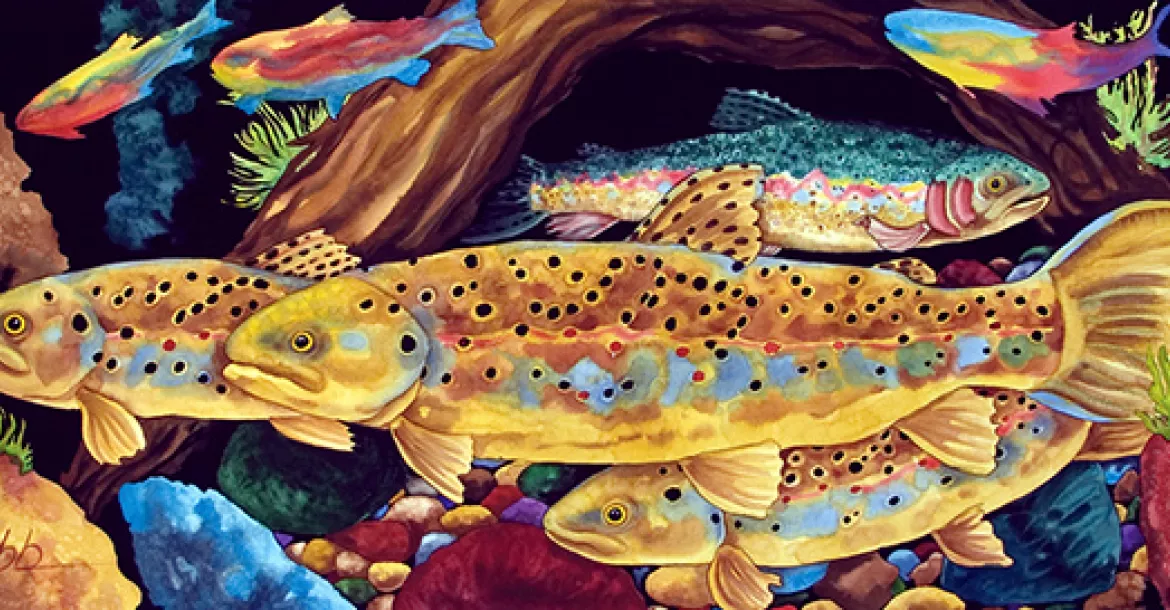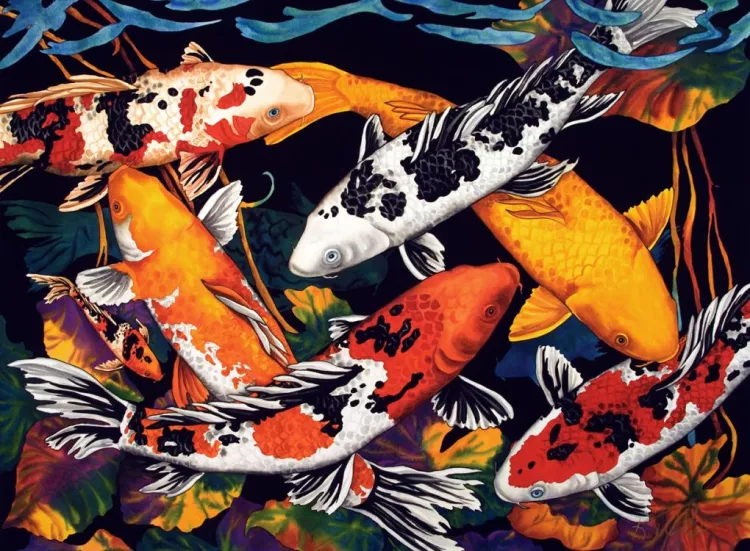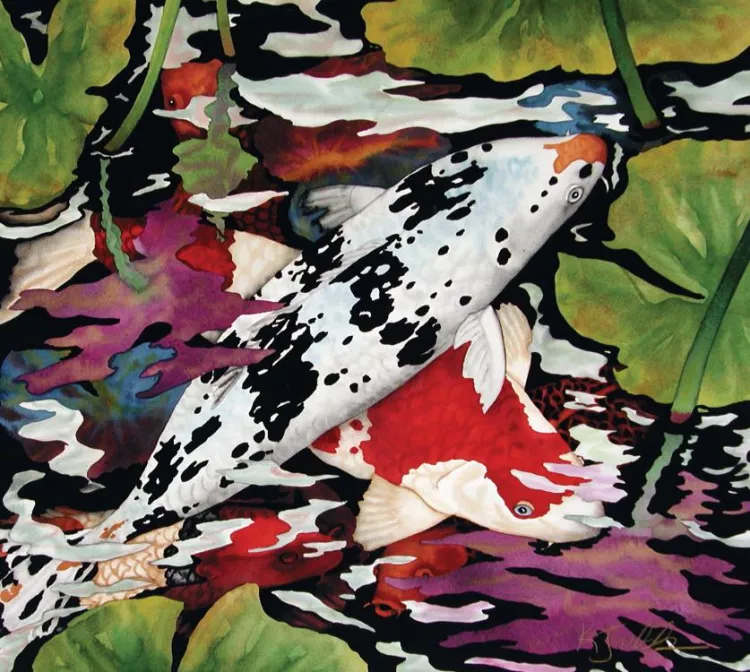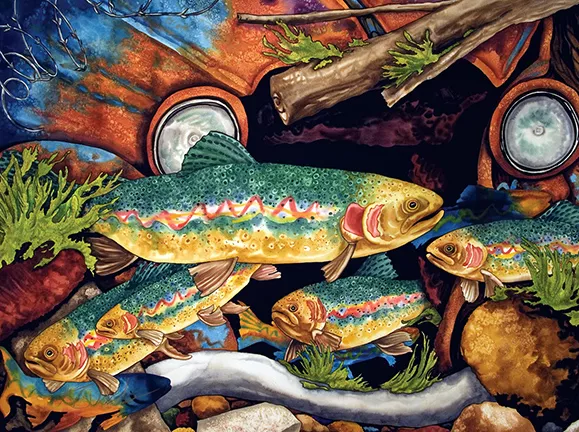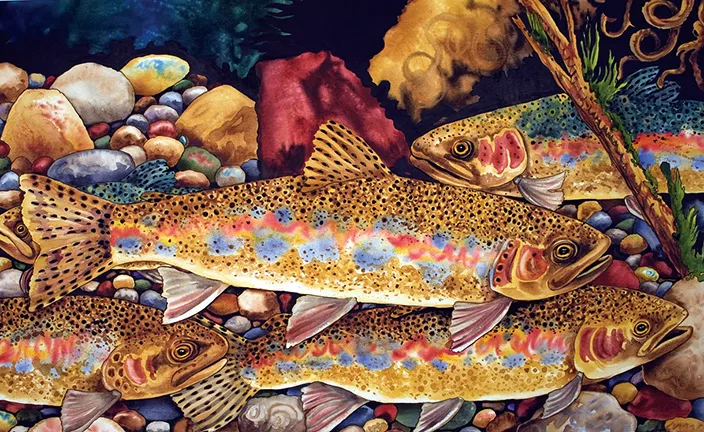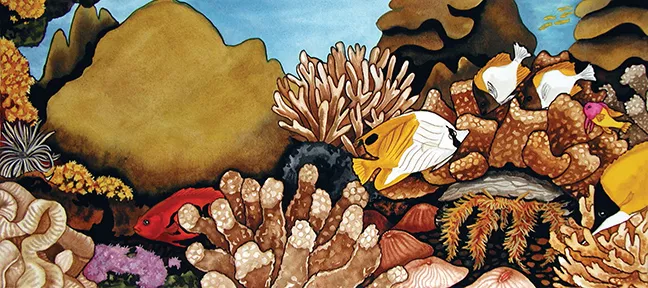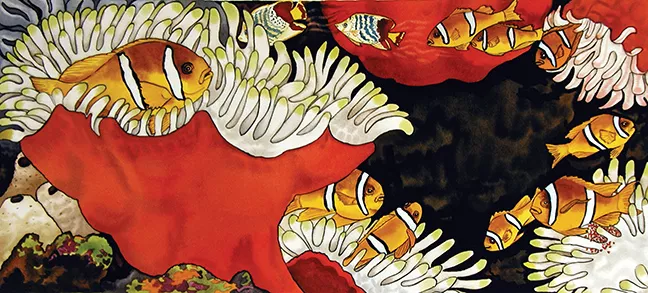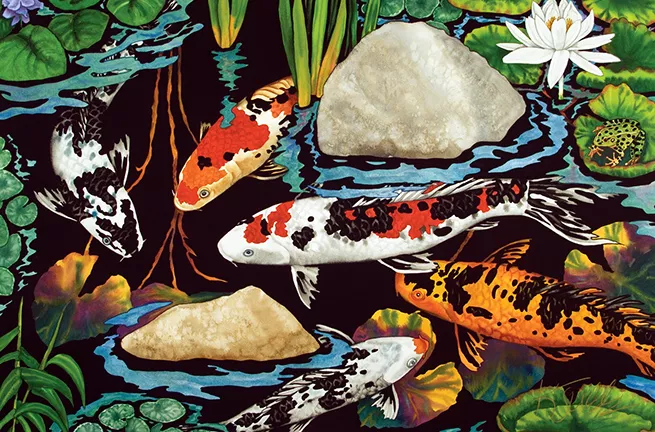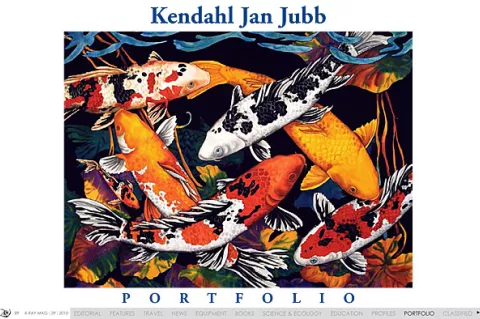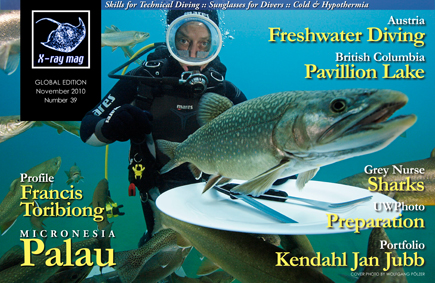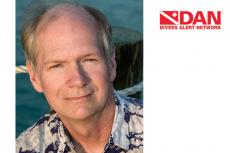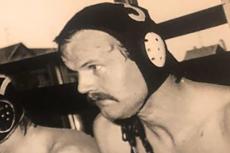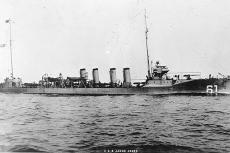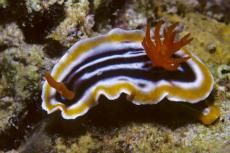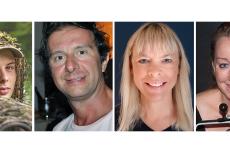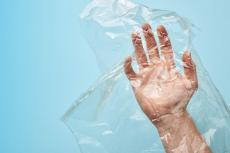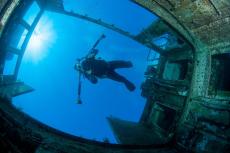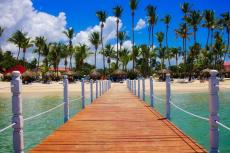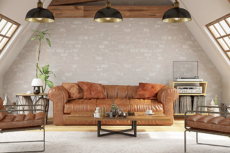
Kendahl Jan Jubb Portfolio
American watercolorist, Kendahl Jan Jubb, creates brilliant, colorful works of underwater life. Originally from southern California, she was raised in the Mid-West and studied at an early age with noted St. Louis impressionist, Victor Harles. After a move to Montana in 1978 to study forestry, she changed her focus to art in her first year at the University of Montana.
X-RAY MAG interviewed the artist to find out the inspiration behind her passion.
Contributed by
Since her first successful one-person show at the University in 1980, Jubb’s work work has appeared in over 30 galleries across the United States, as well as Mexico and the Virgin Islands, with commissions from corporations such as the Bonneville Power Administration, The Peabody Hotel, The Four Seasons Hotel in Singapore and the Holland America Line.
X-RAY MAG: Tell us about yourself, why you started painting the subject matter and medium you have chosen, and what inspired you to become an artist.
KJJ: I always loved nature as a child. My brothers and I roamed the hills behind Los Angeles and then the woods in our St. Louis neighborhood. I moved to Montana to major in Forestry and discovered Art soon thereafter. I had a wonderful teacher, Mary Warner, who nurtured my love of watercolor. When I sold several paintings out of my first show, I decided to commit to being a lifelong professional.
X-RAY MAG: What was your training and education like as an artist and how did you develop your personal style? Do you have any role models, artistic, cultural or political influences?
KJJ: I had an impressionistic art teacher as a child of 12, Victor Harles, whose color palette I still use. After leaving the University, after two years to travel, I worked on my own. I was and am inspired by animals and nature. I love to play with the sensuality of color and contrasting pattern.
X-RAY MAG: Can you describe for us your artistic method... what is your process, how do you choose a subject, compose a painting, etc.?
KJJ: Although now I have a backlog of subjects waiting to be painted, I put up a blank sheet of paper and stare at it until the image ”projects” itself on the paper. My subjects come from my travels, my garden and the Montana environment. I first choose images (from my husband’s photography—we take all the photos I use ourselves) then lightly and generally draw everything out in a line drawing, then paint. Most of my subjects represent human archetypes and emotions.
X-RAY MAG: Are you a scuba diver? Tell us about your experience under the waves... where are your favorite spots and what most inspires you about the underwater world, the oceans and waterways?
KJJ: I have not scuba dived yet, but I love to snorkel, all of which I have done in Hawaii. Most recently off the Big Island. I’m not much of a fisherman either, but I love to watch trout. We have many creeks that are favorites and sometimes feed them grasshoppers to watch their behavior. I have always intended to snorkel at night with a flashlight.
X-RAY MAG: What are your thoughts on art and marine conservation? How do you see them influencing one another, you and your audience?
KJJ: I feel like we all have the respon-sibility to do what we can to leave the world in a better position than when we entered it and do support a local conservation organization that that buys land, especially in riparian zones, trying to preserve open lands. I’ve designed a license plate (for cars) for a land conservation organization that raises funds for them. I also feel that the more people can experience the magic and beauty of our environment, the more we’ll all try to preserve it.
X-RAY MAG: Why art? Why is art important?
KJJ: It’s a mystery that feeds the soul. I feel that I share, in the form of self expression, the beauty, delight, sensual enjoyment and even fear of our natural world. The beautiful fish living in a reef full of dark crevices and then the dark deep mystery of the ocean beyond.
X-RAY MAG: When you teach workshops, what is your focus or mission or point of view you like to share with students?
KJJ: My focus in my workshops is the use of vivid color with watercolor. I have four basic techniques I use over and over, which I teach. I also support the feeling of joy, which comes from the creative process, so my workshops are non-judgmental, focusing on having fun and learning a few skills along the way. I have a wide range of natural subject matter but ALSO love to do commissions. They put me in direct contact with my collectors. ■
For more information and images, visit: kendahljanjubb.com
All life forms are caught in the same cycles of expansion and contraction, vitality and mortality, revulsion and beautification. The interactive contrast of pattern and content is what fuels my creative fire.
— Kendahl Jan Jubb
Published in
-
X-Ray Mag #39
- Læs mere om X-Ray Mag #39
- Log ind for at skrive kommentarer
